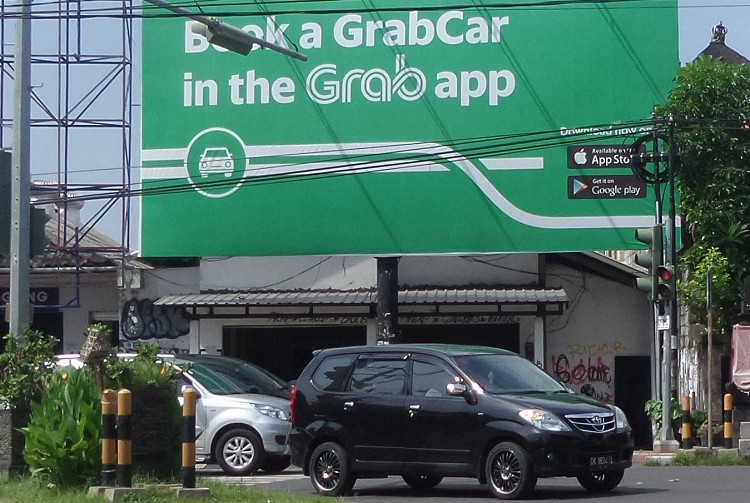Popular Reads
Top Results
Can't find what you're looking for?
View all search resultsPopular Reads
Top Results
Can't find what you're looking for?
View all search resultsRide share might not be the traffic buster you'd expect
Despite their environmentally-friendly perception, ride hailing platforms do not appear to reduce traffic congestion.
Change text size
Gift Premium Articles
to Anyone
M
illions of people around the world have a car in the palm of their hand, even if they do not own the car. This is how ride-hailing platforms such as Uber, Lyft, Didi and Ola have redefined the idea of car access.
Thanks to the mass uptake of smartphones, riders enjoy door-to-door car transport whenever they desire, for instance, when public transport is not available or not convenient, or after drinking alcohol on a night out. Ride-hailing has increased mobility for car-free households and for people with physical and cognitive impairments, boosting participation in new activities: people usually report that 5 to 7 percent of ride-hailing trips would not have been made if ride-hailing was not available.
Beyond these clear social benefits, a key question for society is whether these tech-based mobility innovations play any role in reducing some of the negative consequences of motorised traffic. For instance, the social cost of traffic crashes around the world are enormous: according to the World Health Organization, around 1.35 million people die and between 20 and 50 million are injured every year. Air pollution from traffic is responsible for ill health and premature deaths, crop losses, negative impacts on ecosystems and exacerbation of climate change. Traffic congestion is more than annoying; the social cost of congestion has been estimated in the order of billions of dollars per year in countries like Australia.
In this context, ride-hailing is sometimes perceived as environmentally friendly because, through sharing, fewer cars are used to satisfy people’s mobility needs; and because ride-hailing should support a lifestyle in which people travel by public transport, walking, biking or ride-hailing, depending on the occasion, without the need to own a car. In fact, people with a stronger pro-environmental attitudes can be more likely to use ride-hailing.
However, the actual evidence on the relationship between ride-hailing and societal costs of traffic paints a darker picture. Despite the fact that car owners tend to drive their own cars less once they adopt ride-hailing, several studies from both developed and developing countries have shown that ride-hailing likely increases traffic and urban congestion. This is mainly because a large share of ride-hailing trips replace trips previously made by public transport and because there is also a sizeable addition of 'empty kilometres' (without passengers), when drivers move from the drop-off point of one passenger to the pick-up location of the next, an action repeated millions of times every day.
Researchers have also estimated that the increased traffic due to ride-hailing has increased fatal traffic crashes in the United States, for both car occupants and pedestrians.
Results on the relationship between car ownership and ride-hailing adoption are also mixed. On the one hand ride-hailing users may decide to sell their own car or delay the purchase of a new vehicle due to the availability of ride-hailing, while on the other hand many drivers have acquired a car with the purpose of becoming ride-hailing drivers (in fact, in countries such as Mexico car purchase to become Uber drivers is explicitly supported by Uber through deals with local car financers). Studies have shown both increases and reductions of car ownership due to ride-hailing, although, more commonly, estimations point to a reduction in car registrations.
Governments could step in to improve the sustainability of ride-hailing, in a way to strike the right balance between the social benefits and social costs of this type of mobility platform, for instance by encouraging ride-pooling (shared rides) and implementing synergies between ride-hailing and public transport systems as a first and last-mile connector, especially in locations and periods where ride-hailing does not increase congestion. This would increase the catchment area of public transport and the accessibility to jobs and other opportunities.
Applying a per-kilometre charge that depends on the time and location of ride-hailing driving and on the type of vehicle being used (for example low versus high emission cars) is a way to pursue several sustainability outcomes, and can be used to test new road-charging technologies that could be later applied to all cars in order to reduce congestion and environmental damage. Such actions are unfortunately still lacking in many countries, some 10 years after ride-hailing vehicles took their first disruptive ride on our streets.
---
The writer is associate professor of civil engineering at the University of Twente in Enschede, The Netherlands and at Universidad de Chile in Santiago, Chile.
Originally published under Creative Commons by 360info™.











